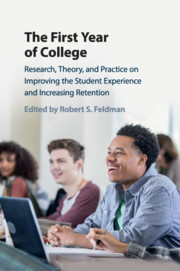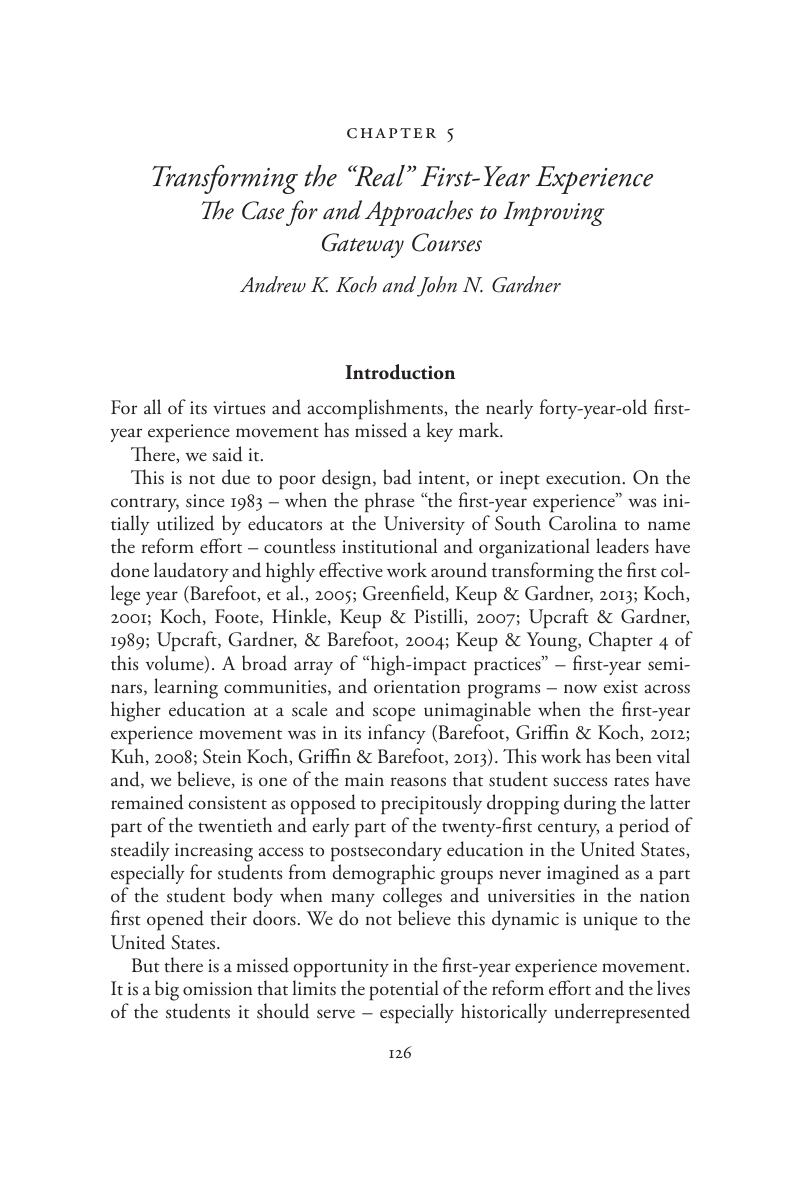 The First Year of College
The First Year of College Book contents
- The First Year of College
- The First Year of College
- Copyright page
- Contents
- Figures
- Tables
- Contributors
- Preface
- Part I Societal and Demographic Factors Underlying First-Year Student Success
- Part II Practices that Foster Student Success
- Chapter 4 Investigating the First-Year Seminar as a High-Impact Practice
- Chapter 5 Transforming the “Real” First-Year Experience
- Chapter 6 Improving Success for Students with Multiple Risk Factors
- Chapter 7 With Retention, the Key Is “Act Locally”
- Chapter 8 Bloom’s 2 Sigma Problem and Data-Driven Approaches for Improving Student Success
- Part III Attitude and Behavior Changes that Promote Student Success
- Index
- References
Chapter 5 - Transforming the “Real” First-Year Experience
The Case for and Approaches to Improving Gateway Courses
from Part II - Practices that Foster Student Success
Published online by Cambridge University Press: 21 December 2017
- The First Year of College
- The First Year of College
- Copyright page
- Contents
- Figures
- Tables
- Contributors
- Preface
- Part I Societal and Demographic Factors Underlying First-Year Student Success
- Part II Practices that Foster Student Success
- Chapter 4 Investigating the First-Year Seminar as a High-Impact Practice
- Chapter 5 Transforming the “Real” First-Year Experience
- Chapter 6 Improving Success for Students with Multiple Risk Factors
- Chapter 7 With Retention, the Key Is “Act Locally”
- Chapter 8 Bloom’s 2 Sigma Problem and Data-Driven Approaches for Improving Student Success
- Part III Attitude and Behavior Changes that Promote Student Success
- Index
- References
Summary

- Type
- Chapter
- Information
- The First Year of CollegeResearch, Theory, and Practice on Improving the Student Experience and Increasing Retention, pp. 126 - 154Publisher: Cambridge University PressPrint publication year: 2017
References
- 1
- Cited by
